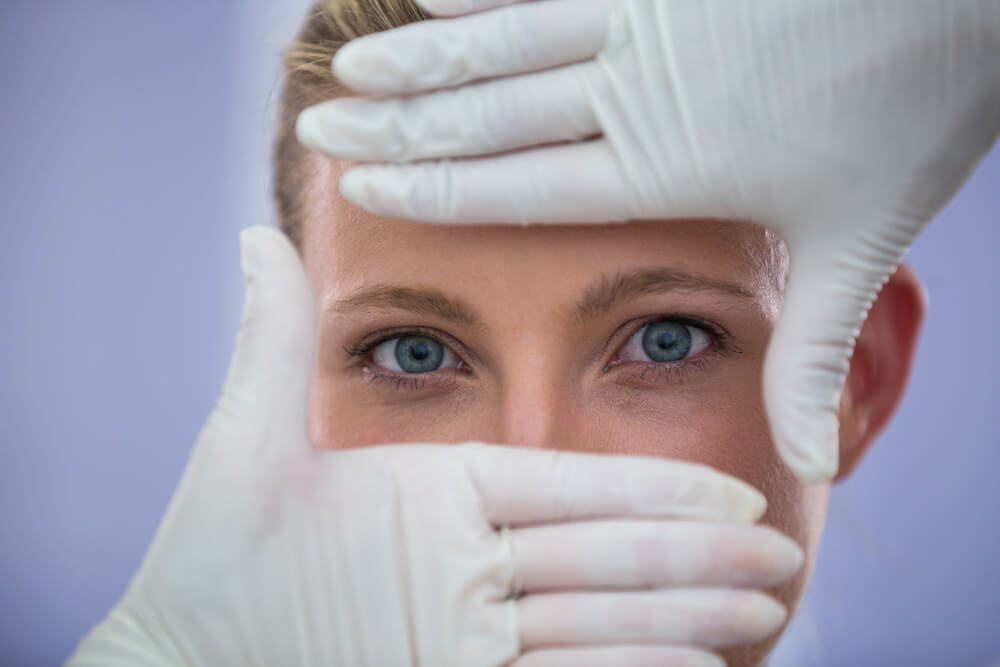The Future of Health: Why Preventative Care Training is Non-Negotiable
Imagine a world where visiting the doctor is not just for when you are sick, but a way to actively build a healthier, longer life. This isn’t a distant dream; it’s the core principle of a major shift happening in healthcare right now. We are moving away from a reactive model of treating diseases and toward a proactive one focused on preventing them.
This new frontier is centered on preventative care, a comprehensive approach that empowers individuals and their physicians to identify risks, optimize health, and enhance vitality before problems arise. It’s about understanding your unique biology and making informed choices that pave the way for a future with less illness and more well-being. The foundation of this entire movement rests on education and specialized knowledge.
For this revolution to succeed, both patients and practitioners need to be well-versed in its principles. High-quality preventative care training is the bridge to this new paradigm, equipping healthcare professionals with the tools to guide their patients toward optimal health and longevity. It transforms the traditional doctor’s visit into a strategic partnership for a better life.

What Exactly Is Preventative Care?
At its heart, preventative care is a healthcare strategy that emphasizes prevention over cure. It’s a philosophy that recognizes that the best way to fight a disease is to stop it from ever taking hold. This approach is often broken down into three distinct categories, each playing a crucial role in the spectrum of health and wellness.

What Is Primary Prevention?
Primary prevention is what most people think of when they hear the term. It involves taking actions to prevent a disease or injury before it ever occurs. This is the most proactive form of care, aimed at reducing both the incidence and prevalence of health problems in a population.
Examples of primary prevention are abundant in our daily lives. Vaccinations are a classic case, providing immunity against infectious diseases like measles and the flu. Public health campaigns that encourage seatbelt use, promote smoking cessation, and advocate for healthy eating habits are all forms of primary prevention.
It also includes lifestyle counseling from your doctor about maintaining a healthy weight, engaging in regular physical activity, and managing stress. The goal is to build a strong foundation of health that makes you more resilient to potential threats.

What Is Secondary Prevention?
Secondary prevention focuses on early detection and intervention. The goal is to identify a disease in its earliest, most manageable stages, often before any symptoms have become apparent. By catching a problem early, the chances of successful treatment are significantly higher, and the long-term impact on a person’s health can be minimized.
Regular health screenings are the cornerstone of secondary prevention. This includes routine blood pressure checks to catch hypertension, mammograms to detect breast cancer, and colonoscopies to find precancerous polyps. Pap tests for cervical cancer and blood tests for cholesterol and blood sugar levels also fall into this category.
These measures don’t prevent the disease from starting, but they prevent it from progressing to a more serious, life-altering stage. It’s a critical safety net in a comprehensive health plan.

What Is Tertiary Prevention?
Tertiary prevention comes into play once a disease has already been diagnosed and established. The objective here is to soften the impact of an ongoing illness or injury, manage its symptoms, and improve the individual’s quality of life. It aims to prevent complications, slow disease progression, and help people manage their long-term health conditions effectively.
This level of care includes chronic disease management programs, such as those for people with diabetes, heart disease, or arthritis. It might involve cardiac rehabilitation programs for someone who has had a heart attack or support groups that help people cope with a chronic condition. Physical therapy, occupational therapy, and specific medication regimens are all tools of tertiary prevention.
While it’s the most reactive of the three levels, tertiary prevention is vital for helping people live full and productive lives despite their health challenges. It represents a commitment to care throughout a person’s entire health journey.

Why Has Preventative Care Become So Important?
The shift toward a preventative model is not just a passing trend; it’s a necessary evolution in response to the changing landscape of global health. Several powerful forces are driving this transformation, from the nature of modern diseases to the simple economics of healthcare.
The most significant driver is the rising tide of chronic, non-communicable diseases. Conditions like heart disease, type 2 diabetes, many forms of cancer, and respiratory illnesses have become the leading causes of disability and death worldwide. Unlike infectious diseases, these conditions develop slowly over many years and are heavily influenced by lifestyle factors.
This makes them uniquely suited to a preventative approach. By addressing the root causes, such as poor diet, physical inactivity, tobacco use, and excessive alcohol consumption, we can dramatically reduce the risk of these debilitating and costly diseases from ever developing.

What Is the Economic Impact?
The financial argument for preventative care is incredibly compelling. Treating advanced chronic diseases is extraordinarily expensive, placing a massive strain on individuals, families, and national healthcare systems. A single hospitalization for a heart attack or a lifetime of managing diabetes can lead to staggering medical bills.
Preventative measures, in contrast, are often far less expensive. A screening test, a vaccination, or a consultation about lifestyle changes costs a fraction of what it takes to manage a full-blown chronic illness. By investing in prevention, we can redirect resources from costly, late-stage treatments to proactive health promotion, leading to a more sustainable and efficient healthcare system for everyone.

How Does It Affect Quality of Life?
Beyond the financial benefits, the impact on human well-being is immeasurable. Preventative care is fundamentally about adding life to years, not just years to life. It’s about maintaining the physical and mental capacity to enjoy family, pursue hobbies, and remain independent as we age.
Living with a chronic disease can mean a daily regimen of medications, frequent doctor visits, and physical limitations that diminish one’s quality of life. Prevention aims to preserve healthspan, the period of life spent in good health, free from the burdens of chronic illness. This focus on vitality and function is perhaps the most powerful argument for embracing a proactive approach to our health.

What Does Modern Preventative Care Training Involve?
As the focus shifts to prevention, the training for healthcare professionals must also evolve. Modern preventative care goes far beyond simply advising patients to eat better and exercise more. It incorporates cutting-edge science and a deeply personalized approach to health, requiring a new set of skills and knowledge.
Clinicians on the front lines, particularly those in primary care, are seeking out advanced education to meet this demand. A comprehensive preventative medicine certification for primary care physicians provides the in-depth training needed to master this new paradigm. It equips them with the expertise to move beyond the one-size-fits-all model and deliver truly individualized care.

How Does It Go Beyond Diet and Exercise?
Today’s preventative medicine delves into the very building blocks of our health. It involves a deep understanding of genomics, the study of an individual’s complete set of DNA. By analyzing a person’s genetic predispositions, a physician can identify potential health risks long before they manifest and create a highly targeted prevention plan.
This might involve recommending specific nutritional changes, supplements, or more frequent screenings based on a person’s unique genetic makeup. It’s the ultimate form of personalized medicine, using your own biological blueprint to guide your health journey.
Furthermore, advanced training covers sophisticated diagnostics. This includes detailed biomarker analysis through blood, urine, and saliva tests that provide a snapshot of your metabolic health, inflammation levels, hormonal balance, and nutrient status. This data allows practitioners to identify subtle imbalances and address them before they escalate into disease.

What Is the Role of Gut Health?
One of the most exciting areas in preventative medicine is the study of the gut microbiome. We now understand that the trillions of bacteria, viruses, and fungi living in our digestive tract play a monumental role in our overall health. They influence everything from our immune system and mood to our metabolism and risk of chronic disease.
Maintaining a healthy, diverse microbiome is a key pillar of preventative health. This involves understanding the interplay of probiotics, which are beneficial live bacteria, and prebiotics, the fibers that feed them. But the science is advancing even further, looking at the beneficial compounds produced by these microbes.
These compounds are known as postbiotics, and they are gaining significant attention for their direct health benefits. Understanding what are postbiotics and their applications in medicine is becoming crucial for practitioners who want to offer the most advanced strategies for optimizing gut health and, by extension, whole-body wellness.

What is the Connection Between Preventative Care and Regenerative Medicine?
Perhaps the most forward-looking aspect of modern prevention is its growing intersection with regenerative medicine. While once considered the domain of science fiction, this field is rapidly becoming a clinical reality, offering powerful new tools for not only treating disease but also for preventing the functional decline associated with aging.
Regenerative medicine is a branch of science that aims to repair, replace, or regenerate human cells, tissues, or organs to restore normal function. Instead of just managing symptoms, it seeks to address the root cause of damage, whether from injury, disease, or the aging process itself. This focus on restoration and renewal aligns perfectly with the proactive goals of preventative care.
By harnessing the body’s own healing mechanisms, regenerative medicine offers the potential to prevent age-related decline at a cellular level. It’s about keeping the body’s systems running efficiently and resiliently for as long as possible, which is the ultimate form of prevention.

What Are Some Examples of Regenerative Therapies?
The field of regenerative medicine is broad and encompasses several groundbreaking technologies. One of the most well-known is stem cell therapy. Stem cells are unique in their ability to develop into many different types of cells, from muscle cells to brain cells. The idea is to use these cells to repair or replace damaged tissue in the body.
Research in this area is exploding, exploring the use of stem cells for conditions like osteoarthritis, heart disease, and neurodegenerative disorders. The work being done by organizations like the International Society for Stem Cell Research is crucial for advancing the science responsibly and ethically, setting standards for research and clinical application worldwide.
Another major area is gene therapy. This approach involves introducing, removing, or changing genetic material within a person’s cells to treat or prevent a genetic disorder. It holds immense promise for correcting inherited conditions that were once considered untreatable.
Tissue engineering is yet another fascinating frontier, where scientists combine cells, engineering principles, and biomaterials to create functional tissues or organs in the lab. These engineered tissues could one day be used to replace damaged or diseased parts of the body, from skin grafts to entire organs like bladders or blood vessels.

How Is This Advanced Field Regulated?
With such powerful and novel technologies, robust oversight and regulation are absolutely essential to ensure patient safety and efficacy. Governmental bodies around the world play a critical role in evaluating these new therapies before they become widely available. They establish strict guidelines for clinical trials and manufacturing processes.
In the United States, the Food and Drug Administration (FDA) is at the forefront of this effort. The FDA has specific pathways for evaluating and approving these complex treatments, such as the designation for Regenerative Medicine Advanced Therapy products. This framework helps to expedite the development and review of promising therapies while maintaining high standards for safety.
Professional societies also play a vital role in guiding the field. Groups like the American Society of Gene & Cell Therapy bring together leading scientists, physicians, and patient advocates to share knowledge, establish best practices, and promote education. Their work ensures that the field advances in a way that is both scientifically sound and ethically responsible, building public trust and paving the way for future breakthroughs.

How Can You Incorporate Preventative Principles Into Your Life?
Understanding the importance of preventative care is the first step; actively applying its principles is the next. While advanced diagnostics and regenerative therapies represent the cutting edge, the foundation of prevention still rests on the daily choices you make. The goal is to create a lifestyle that consistently supports your health and well-being.
This begins with the fundamentals: a balanced, nutrient-dense diet, regular physical activity, sufficient sleep, and effective stress management. These are not just recommendations; they are powerful tools that influence your biology at a cellular level every single day. Focusing on whole foods, moving your body in ways you enjoy, prioritizing 7-9 hours of quality sleep, and finding healthy outlets for stress are non-negotiable pillars of a preventative lifestyle.
Beyond these basics, it’s about being proactive with your health. This means scheduling and attending regular check-ups and recommended screenings. Don’t wait until something feels wrong to see your doctor. Use these visits as an opportunity to discuss your health goals, risk factors, and prevention strategies.

Why Is a Partnership with Your Doctor So Important?
Navigating the world of preventative health can be complex. That’s why finding a healthcare provider who is knowledgeable in preventative and functional medicine is so important. This professional can act as your co-pilot, helping you interpret advanced diagnostic tests and create a personalized health plan that is tailored to your unique needs.
They can guide you on appropriate supplementation, help you make sense of your genetic predispositions, and keep you informed about new and relevant health strategies. This collaborative relationship transforms you from a passive recipient of care into an active participant in your own health journey. It empowers you to make the most informed decisions possible.
Finally, embracing a preventative mindset is key. This means viewing your health as your most valuable asset and investing in it accordingly. It requires patience and consistency, as the benefits of prevention accumulate over time. Small, sustainable changes made today can lead to profound differences in your health and vitality decades from now.
This proactive stance is the essence of modern healthcare. It’s a shift from waiting for problems to arise to actively creating a future where you can thrive. By combining foundational lifestyle habits with the insights of modern science and the guidance of a trained professional, you can take meaningful control of your health destiny.
Frequently Asked Questions

How does this certification concretely change my day-to-day patient interactions?
Completing a lifestyle medicine board certification course fundamentally shifts your clinical approach from primarily reactive to proactive and collaborative. You will be equipped with evidence-based frameworks to confidently prescribe lifestyle changes as a first-line or complementary therapy. This means spending more time on motivational interviewing, shared goal-setting, and educating patients on the "how" and "why" behind nutrition, exercise, and stress management, rather than solely managing symptoms with prescriptions.
This translates into more empowered and engaged patients who become active partners in their own health journey. For instance, instead of just prescribing a statin for high cholesterol, your conversation will also involve creating a tangible plan for incorporating specific plant-based foods or starting a manageable walking routine. You’ll move beyond simply telling patients what to do and instead provide them with the tools and support to create sustainable, healthy habits.

What is the typical time commitment to complete the course and adequately prepare for the board exam?
The required prerequisite coursework, often completed online, typically involves around 30 hours of CME/CE content that can be finished at your own pace. Most clinicians spread this learning over several weeks or a few months to fully absorb the material while balancing their professional duties. This initial phase is focused on building a strong foundational knowledge across the six pillars of lifestyle medicine.
Beyond the core course, dedicated preparation for the American Board of Lifestyle Medicine (ABLM) exam is crucial for success. Most successful candidates recommend setting aside an additional 50 to 100 hours specifically for exam review, which includes working through practice questions, reviewing key studies, and solidifying your understanding of clinical guidelines. Therefore, a realistic total time investment, from starting the course to sitting for the exam, would be spread across a 3 to 6-month period for the average busy professional.

Beyond physicians, how can other healthcare professionals apply this knowledge in their roles?
While physicians and DOs sit for the board certification, the knowledge from a lifestyle medicine course is invaluable for a wide range of allied health professionals. Registered nurses, physician assistants, dietitians, physical therapists, and health coaches can leverage these principles to greatly enhance their effectiveness and work at the top of their license. The curriculum provides a common language and evidence-based toolkit for the entire care team to use in promoting patient health.
For example, a physical therapist can integrate stress management and sleep hygiene coaching to improve a patient’s recovery outcomes from an injury. A registered dietitian can use advanced skills in behavioral change to help clients adhere to a therapeutic eating plan. This interdisciplinary application allows for a more holistic and unified approach, ensuring patients receive consistent, reinforcing messages about healthy lifestyle choices from every professional they encounter.
Discover the most comprehensive functional medicine training, longevity training, and biohacking certification programs designed specifically for healthcare professionals, medics, and clinic owners who want to master regenerative medicine protocols and anti-aging therapies. Take the next step in your career with Talking Longevity.







